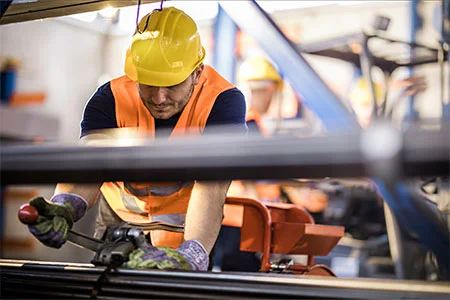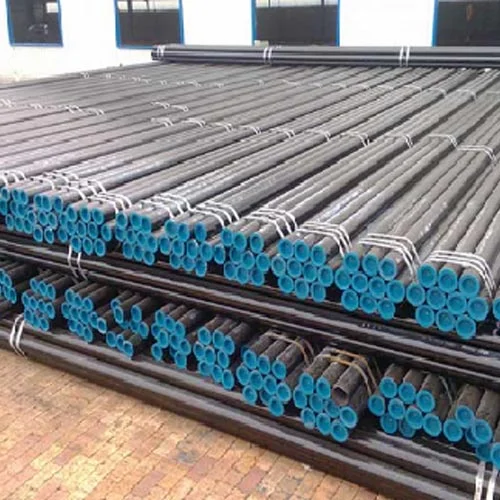Welcome to My Blog!
Before we dive into the content, I’d love for you to join me on my social media platforms where I share more insights, engage with the community, and post updates. Here’s how you can connect with me:
Facebook:https://www.facebook.com/profile.php?id=61559060896490
Now, let’s get started on our journey together. I hope you find the content here insightful, engaging, and valuable.
Table of Contents
Introduction
Modern civilization relies fundamentally on robust infrastructure. From the towering skyscrapers that define our skylines to the intricate networks that deliver essential resources, the stability and efficiency of these systems are paramount. At the core of this infrastructure lies a combination of materials whose properties and applications are essential for societal advancement. The significance of steel & pipe in these foundational structures cannot be overstated. These materials are the literal backbone of modern life, enabling the construction of complex systems and the transport of critical resources. Understanding the profound impact of high-quality steel & pipe is essential for anyone involved in construction, engineering, or resource management. This blog post explores why these materials are indispensable, examining their unique properties, manufacturing processes, and diverse applications in modern infrastructure. We will look at how high-quality materials ensure the longevity and safety of critical systems. Shandong Zhongzheng, a professional manufacturer of high-quality seamless steel & pipe, recognizes this vital role, providing products in various sizes, grades, and specifications tailored for demanding industrial applications globally.
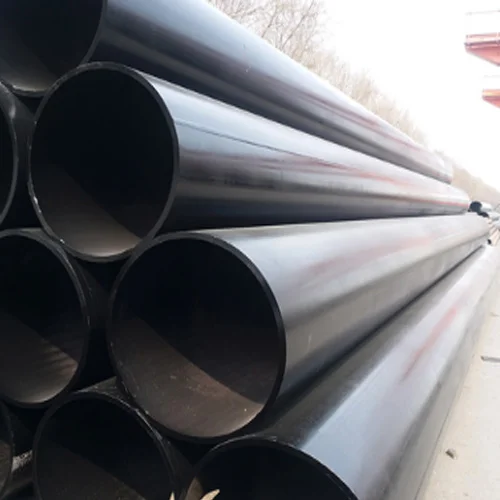
The Foundational Role of Steel
Steel, an alloy of iron and carbon, has revolutionized construction and engineering. Its exceptional strength-to-weight ratio, durability, and versatility make it the preferred material for structural components in almost every major construction project.
The Science of Strength and Durability
The strength of steel is a result of its composition and the processes used to treat it. By adjusting the carbon content and incorporating other elements like manganese, chromium, or nickel, engineers can achieve specific properties such as enhanced tensile strength, ductility, or resistance to corrosion. This adaptability allows steel to withstand significant stress and environmental exposure, ensuring the longevity of structures.
Modern infrastructure, including bridges, high-rise buildings, and stadium roofs, relies heavily on steel’s ability to bear immense loads. The predictable behavior of steel under stress allows engineers to design structures with precision, maximizing safety and efficiency. Furthermore, the durability of steel means infrastructure can endure decades of use with minimal degradation, reducing maintenance costs and ensuring consistent performance.
Versatility in Construction
Steel’s versatility extends beyond its structural strength. It can be manufactured into a wide range of shapes, including beams, sheets, and rebar, each serving a unique purpose in construction.
- Structural Frameworks: Steel frames are essential for modern buildings, providing a skeleton that supports the entire structure. The ease of fabrication and erection of steel components speeds up construction timelines.
- Reinforcement (Rebar): When combined with concrete, steel reinforcement dramatically enhances the strength and tensile capacity of concrete structures, making composite materials ideal for foundations, walls, and slabs.
- Prefabrication: Steel components can be manufactured off-site to precise specifications, reducing construction time and waste at the site. This approach is particularly beneficial for large-scale infrastructure projects like bridges and large industrial facilities.
Sustainability and Recyclability
In an era focused on sustainability, steel offers significant advantages. It is one of the most recyclable materials globally. Steel scrap can be melted down and reformed into new products without losing its inherent properties. This closed-loop recycling process conserves natural resources and reduces the environmental impact of construction, making steel an essential component of green infrastructure initiatives.
The Indispensable Nature of Pipe Systems
Piping systems are the lifelines of modern civilization, crucial for transporting everything from clean drinking water and natural gas to industrial chemicals and wastewater.
Transporting Essentials: Water, Energy, and Resources
The functionality of cities and industries depends on robust networks of pipes.
- Water Management: Reliable pipe systems are necessary to deliver potable water to homes and businesses and to manage wastewater effectively. The integrity of these pipes is paramount for public health, preventing contamination and ensuring efficient distribution.
- Energy Transport: Pipes are fundamental to the energy sector. They transport crude oil, refined fuels, and natural gas across vast distances, connecting production sites to processing plants and consumers. High-pressure applications in the oil and gas industry demand materials that can withstand extreme conditions and resist corrosion.
- Industrial Processes: Manufacturing plants rely on specialized pipe systems for the transport of steam, chemicals, and various fluids required for production. These systems must be engineered to handle specific temperatures and pressures, ensuring operational safety and efficiency.
Types of Pipes and Their Specific Roles
While various materials are used for pipes, each has specific applications based on its properties:
- Carbon Steel & Pipe: Often used for general industrial applications, including water and gas lines, where high strength and affordability are prioritized.
- Stainless Steel & Pipe: Known for exceptional corrosion resistance, they are vital in environments involving chemicals, high temperatures, or hygiene requirements, such as food processing and pharmaceuticals.
- Ductile Iron Pipes: Commonly used for water and sewage systems due to their durability and resistance to breakage.
- Plastic Pipes (PVC, HDPE): Lightweight and corrosion-resistant, these are often used for residential water distribution and drainage.
The selection of the appropriate material is a critical engineering decision, balancing cost, durability, and specific application requirements.
The Synergy of Steel & Pipe in Infrastructure
The most impactful infrastructure projects are those where the combination of structural Steel & Pipe systems works seamlessly. While steel provides the framework, pipes enable the function.
Consider a modern power plant. Structural steel forms the building that houses the equipment, supports the massive turbines, and constructs the cooling towers. Simultaneously, specialized pipes transport high-temperature steam, cooling water, and fuel, making the generation process possible. Similarly, in a large refinery, extensive networks of steel structures support complex piping systems carrying various petroleum products.
The Manufacturing Process: Ensuring Quality in Every Component
The quality of materials used in infrastructure projects is determined long before they reach the construction site.
Steel Production and Quality Control
The production of steel involves precise processes, from smelting iron ore in blast furnaces to refining and alloying. Modern steel & pipe manufacturing utilizes sophisticated technologies to ensure consistency and purity. Quality control measures, including metallurgical testing and dimensional verification, are essential to meet industry standards.
Pipe Manufacturing: Seamless vs. Welded
Pipe manufacturing involves different techniques, primarily categorized as seamless and welded.
- Seamless Pipes: These are produced without a welded seam. They are ideal for applications requiring high pressure and structural integrity, as they have uniform strength throughout. Seamless pipes are often used in the oil and gas industry and high-temperature applications.
- Welded Pipes: These are formed by rolling a plate and welding the edges. They are typically more cost-effective and suitable for lower-pressure applications, such as general fluid transport or structural components.
The choice between seamless and welded pipes depends on the specific demands of the infrastructure project. As a manufacturer specializing in high-quality seamless steel & pipe, Shandong Zhongzheng focuses on producing materials with superior strength and reliability, crucial for infrastructure that demands the highest performance.
Applications Across Diverse Sectors
The application of high-quality steel & pipe systems spans nearly every industry, forming the foundation for innovation and development.
Energy and Oil & Gas
The energy sector is a primary consumer of these materials. Pipelines for oil and natural gas are critical to global energy security. These applications demand pipes that can withstand extreme pressures, varying temperatures, and harsh environmental conditions, including corrosive elements. Steel structures are also fundamental to offshore drilling platforms and refineries.
Civil Engineering and Construction
Civil engineering relies heavily on steel for structural support in buildings, bridges, and tunnels. The ability to span large distances and support heavy loads is unmatched by other common materials. Pipes are also essential for drainage and ventilation systems within these structures.
Water Management and Sanitation
Ensuring access to clean water and managing wastewater are major infrastructure challenges. Durable and reliable pipes are necessary to prevent leaks, maintain water quality, and ensure the efficient movement of fluids through municipal systems.
Quality Standards and Certification
For infrastructure projects, adherence to quality standards is non-negotiable. International standards, such as those set by ASTM, ASME, and ISO, provide frameworks for manufacturing and testing steel & pipe.
Compliance with these standards ensures that materials meet specific requirements for chemical composition, mechanical properties, and dimensional tolerances. Third-party certifications and rigorous testing, including hydrostatic testing and non-destructive evaluations, guarantee the integrity of the materials before they are deployed in critical applications.
Selecting Materials for Modern Infrastructure Projects
The selection of materials for modern infrastructure projects requires a careful balance of various factors. Engineers must consider the intended application, environmental conditions, required lifespan, and cost.
Factors Influencing Material Choice
- Corrosion Resistance: In corrosive environments, such as marine settings or chemical plants, specialized alloys or coatings are required.
- Temperature and Pressure: High-temperature or high-pressure applications necessitate materials with superior strength and thermal stability.
- Structural Requirements: The load-bearing capacity of steel & pipe components must be accurately calculated to ensure structural stability.
Economic and Environmental Considerations
While performance is key, the economic viability and environmental impact of materials are also crucial. The long-term cost of maintenance and the recyclability of materials play significant roles in the selection process.
| Material Category | Typical Application in Infrastructure | Key Benefits |
| Carbon Steel (Structural) | Building frameworks, bridges, support beams | High tensile strength, cost-effective, versatile |
| Stainless Steel (Piping/Tubing) | Water treatment, chemical processing, food industry | Excellent corrosion resistance, hygienic, durable |
| Alloy Steel | High-temperature applications, specialized machinery | Enhanced strength, heat resistance, improved toughness |
| Seamless Pipe | High-pressure oil and gas transport, boiler tubes | Superior pressure resistance, uniform structure |
| Welded Pipe | General fluid transport, scaffolding, drainage | Cost-effective, suitable for large diameters |
The Global Market for Steel & Pipe
The global market for steel & pipe is dynamic, driven by urbanization, industrial growth, and the ongoing need to upgrade aging infrastructure.
Supply Chain Resilience
Ensuring a steady supply of high-quality materials is essential for large-scale infrastructure projects. Disruptions in the global supply chain can lead to project delays and increased costs. Manufacturers and suppliers must maintain robust logistics and inventory management to meet the demands of global infrastructure development.
The Role of Manufacturers in Innovation
Manufacturers play a crucial role in advancing the properties of materials. Research and development focus on creating stronger, lighter, and more durable materials, as well as optimizing manufacturing processes for efficiency and sustainability.
Innovation and Future Trends in Infrastructure Materials
The future of infrastructure is closely linked to innovations in materials science and engineering.
Advanced Alloys and Smart Materials
Ongoing research is developing new steel alloys with improved properties, such as higher strength and better corrosion resistance. Additionally, the concept of “smart infrastructure” involves embedding sensors within materials to monitor structural health in real-time, allowing for proactive maintenance and enhanced safety.
Digitalization in Manufacturing
The adoption of digital technologies, including Artificial Intelligence (AI) and the Internet of Things (IoT), is transforming manufacturing processes. Digitalization enables greater precision in production, reduces waste, and allows for better tracking of materials from the factory floor to the construction site.
Sustainable Practices
The infrastructure sector is increasingly focused on reducing its carbon footprint. This includes adopting cleaner manufacturing processes for steel & pipe production and promoting the use of recycled materials in infrastructure projects.
Case Studies: Infrastructure Success Stories
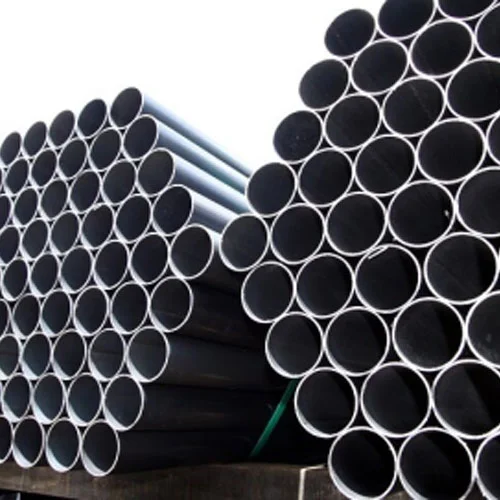
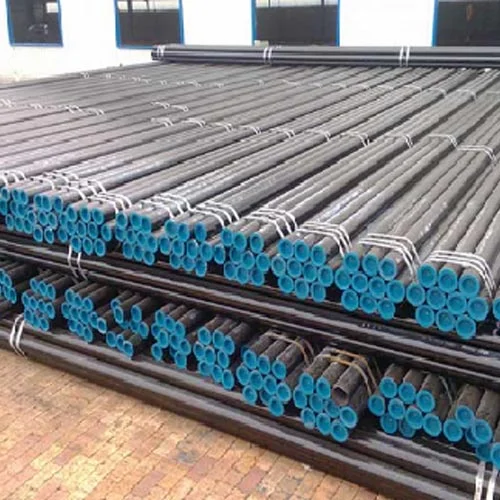
The impact of quality materials is evident in major infrastructure projects worldwide.
- The Shanghai Tower: One of the tallest buildings in the world, its stability relies on a complex structural steel framework designed to withstand high winds and seismic activity.
- Trans-Alaska Pipeline System: This extensive pipeline system, operating in extremely cold and challenging conditions, demonstrates the resilience of high-quality steel & pipe systems in transporting critical resources over vast distances.
These examples underscore that the success and safety of infrastructure depend on the quality and reliability of the materials used in their construction.
Conclusion
The integrity of modern infrastructure is inextricably linked to the quality of the materials used in its construction. The role of steel & pipe as foundational components cannot be overstated; they provide the strength, durability, and functionality required for everything from residential buildings to complex industrial systems. The continued development of stronger, more efficient, and sustainable materials is essential for future infrastructure development. As a professional high-quality seamless steel & pipe manufacturer, Shandong Zhongzheng is dedicated to producing materials that meet the highest standards of quality and performance, supporting the critical needs of diverse industries. Ensure the longevity and success of your infrastructure projects by choosing reliable, high-grade materials. For inquiries about our high-quality seamless steel & pipe and how we can support your project, please contact us today.
FAQ
What is the main difference between seamless and welded pipes?
Seamless pipes are manufactured from a solid billet and have no welded seams, offering uniform strength and better performance in high-pressure applications. Welded pipes are made by rolling and welding metal strips, making them suitable for lower-pressure uses and larger diameters.
Why is steel & pipe considered sustainable in construction?
Steel is highly sustainable because it is 100% recyclable. It can be melted and reformed repeatedly without losing its properties, reducing the need for virgin materials and minimizing waste.
How do quality standards affect infrastructure projects?
Pipes are essential for the transportation of critical resources, including clean water, sewage, natural gas, and electricity lines, forming the vital circulatory system of a city.
Can steel and pipes be customized for specific applications?
Yes, both steel & pipe structures and pipes can be highly customized in terms of grade, size, shape, and coating to meet the unique demands of specific infrastructure projects, ensuring optimal performance.


